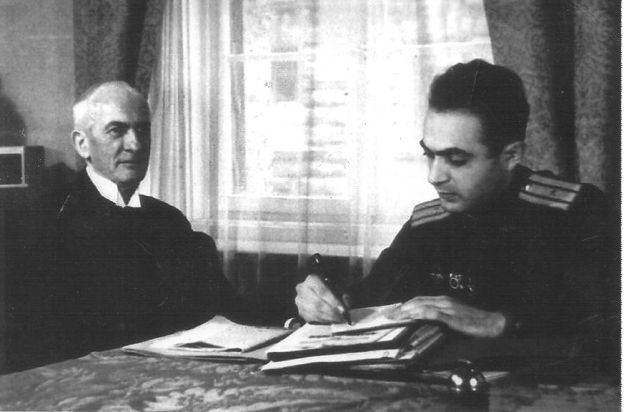
My Favorite Game Of. Number 15. Issac Lipnitsky.
Some time ago, when I did a Keres game in this series, I started to put some bits and pieces together for an article on Lipnitsky.
Since then my friend the wonderful @UAArtur has beaten me to it - the old story of a blitz player against a correspondence player!![]() . You can find his article HERE Go take a look. So I decided to add Lipnitsky to this series instead.
. You can find his article HERE Go take a look. So I decided to add Lipnitsky to this series instead.
So, Issac Lipnitsky. As you will see from Artur's article, he had a short career, but a distinguished one. Anyone with Fischer's '60 Memorable Games' will have heard of him, because he wrote one of the absolutely classic books - Questions of Modern Chess Theory. If you don't have it, then you have a hole the size of the Grand Canyon in your chess library. Go buy it.

That is the version that I have. Before anyone thinks that it is out of date, one of the opening lines in it was used in a game that was played last week. It is a genuinely timeless classic.
As both of my regular readers will know, I am not a 'facts and figures' type. I am interested in how players actually played - and not just their 'best games' etc. and how they were a part of the evolution of chess thinking;
So, the above book will show you the man's thinking. He viewed chess from all angles! Opening theory, strategy, positional play, dynamic imbalances, tactical play and combinations, as well as general 'chess technique'. He also took into account the practical and psychological side of the game.
In practice I would put him into the 'dynamic positional player' catagory - somewhat like Alekhine, for example.
He was also a little unusual in the context of Soviet players of the time from the strategical viewpoint. Where many were focusing more on the dynamics of 'dark square' strategies - the King's Indian and Grunfeld defences being major sources of investigation for example - Lipnitsky was more from the Ragozin school, which dates back to Breyer, at least, and tended to focus his attention on a 'light square' approach.
For example the original Russian version of the book contains a full analysis of 'The Ragozin Defence' and he favoured Bc4 lines against the Sicilian Defence - which Fischer took a particular interest in, as well as King's Fianchetto lines.
The photograph from which the header picture is taken.
Lipnitsky and Artur Werner, from the archives of L. Yakir. from here.

My version of 'The Soviet School of Chess', by Kotov and Yudovich, gives the following about him.
'While looking through a chess magazine some years ago, Mikhail Botvinnik was attracted by an involved game and by the bold conclusions and generalizations in the annotation. He checked and re-checked the variations and found them correct; the author of the annotation clearly had a deep, far-reaching understanding of chess.
Dwelling on the Soviet Union's gifted young players in a speech he made not long afterwards, Botvinnik described that game and told how he had tried to refute the annotation. ''I analysed a game played by Lipnitsky, a Kiev candidate-master, and annotated by him,'' he said. ''In my opinion, he is a player with a big future''. That was early in 1949.'
One paragraph has a particular sad irony - perhaps the author did not know of Lipnitsky's health situation - but is also a typical example of the demands set by the Soviet chess system at the time. It makes me sad to read it.
'The Kiev master's tournament performances have declined in the past few years, however. It looks as though he decided that now he could work less than before. But complacency is a bad state to get into. we trust he will draw the proper conclusions from his reverses'.
A year after my English version of that book was published, Lipnitsky was dead.
Apart from the article by @UAArtur a quick internet search will turn up a lot of information and beautiful chess, e.g. https://kevinspraggettonchess.wordpress.com/2011/01/01/isaak-lipnitsky-1923-1959/ for example, for those who wish to look a little closer, without buying too many books!
So, in 1950, Lipnitsky came equal second - behind Keres who was at the peak of his powers, with a host of great names behind them. Despite that performance, Lipnitsky - along with Smyslov and others - had to qualify for the next finals. As I have said before, anyone who played in the finals of the soviet championships in those days could seriously play! go look at the table of Lipnitsky's semi-final on rusbase - Probably 10 players of accepted Grandmaster ( when it meant something) status, and that doesn't include the winner!!
My favourite game of Issac Lipnitsky was played on that occasion. It is pure Lipnitsky. The notes are his, and show the quality of material you can expect if you buy the book.
The two players are in one of my favourite chess photographs, The Spartak team of 1954. Furman - a much neglected player who I will come back to at some point - is standing, 2nd from the left, with Lipnitsky standing on the far right.

Enjoy the game!
